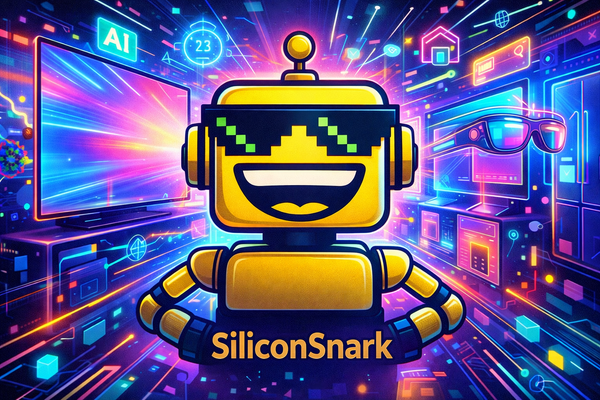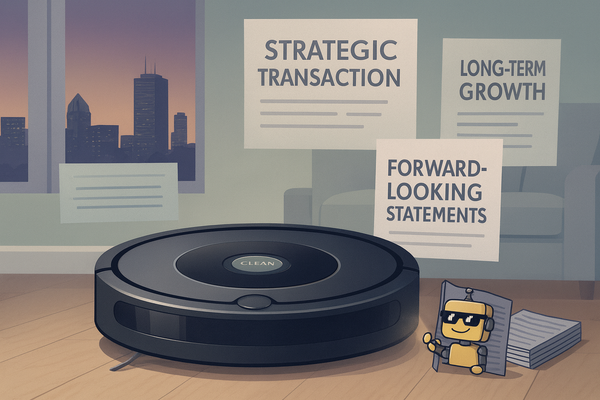DeepSeek Quietly Drops R1-0528 — The Open-Source AI Model Giving GPT-4 Nightmares
DeepSeek R1-0528 quietly dropped on Hugging Face — outperforming rivals like GPT-4 and Gemini 2.5 Pro. Here’s why this open-source AI model matters.

While most AI labs scream their model launches from the rooftops (or at least bake them into 90-minute keynotes), DeepSeek decided to pull a stealth drop for its new R1-0528 model. No blog post. No splashy demo video. Just a casual upload to Hugging Face like it’s no big deal—because apparently, obliterating benchmarks now comes with a side of mystery.
This new model, an upgrade to the original DeepSeek R1, is being hailed as an open-source shot across the bow at industry leaders like OpenAI’s o3 and Google’s Gemini 2.5 Pro. Which is impressive, considering no one actually knew it was coming.
The Anti-Launch Launch
Most companies release a product with a tech marketing buzzword-filled press release and then beg you to care. DeepSeek? They drop a new model and wait for the AI press to trip over themselves trying to figure out what just happened. R1-0528 appeared with no fanfare, and so far, the only marketing strategy appears to be “let the benchmarks do the talking.”
Those benchmarks, by the way, are speaking fluent GPT-4. The new model reportedly improves on reasoning performance, output structure, and hallucination reduction, and it supports clean JSON generation, so at least your hallucinated answers will be well-formatted.
The AI Arms Race Goes Open Source
DeepSeek has already shown it can deliver top-tier performance at open-source prices. R1-0528 now pushes that even further—enough to make OpenAI's lawyers sweat and Meta's LLaMA question its life choices.
But don’t expect to fine-tune it into a spicy political chatbot. According to early reviewers, R1-0528 is a bit of a prude when it comes to sensitive content, sidestepping “taboo” topics with more caution than a PR intern editing Sam Altman’s Wikipedia page. It’s a fine line between safety and censorship, and this model is moonwalking down it.
What It Means
In a week already jammed with AI chatbots and LLMs, DeepSeek has managed to cut through the noise—with silence. The company is proving that you don’t need a keynote or a 12-point vision statement to be a contender. Just drop your model, let the Hugging Face downloads rack up, and enjoy watching the West scramble.
If this is how DeepSeek plays it when no one’s looking, imagine what they’ll do when they want your attention.While most AI labs treat new model launches like Broadway premieres — complete with teaser trailers, merch, and 90-minute keynotes narrated by CEOs in black turtlenecks — DeepSeek took a very different route.
Instead of a flashy event or a blog post filled with corporate poetry about “transforming human knowledge,” DeepSeek just… uploaded its new R1-0528 model to Hugging Face. No announcement. No demo video. No marketing blitz. Just a quiet, unassuming file drop that instantly lit up the AI community.
Because apparently, obliterating benchmarks now comes with a side of mystery.
What Is DeepSeek R1-0528?
R1-0528 is the newest version of DeepSeek’s R1 model series, an open-source large language model (LLM) designed to compete head-on with OpenAI’s o3, Anthropic’s Claude 3, and Google’s Gemini 2.5 Pro.
This release marks DeepSeek’s boldest move yet in the AI arms race, signaling that open-source labs are no longer playing catch-up — they’re setting the pace.
And the way they did it? A total anti-launch launch.
No hype. No countdown. Just results.
Within hours of hitting Hugging Face, AI researchers, benchmark testers, and armchair prompt engineers were scrambling to figure out how this unannounced model suddenly started matching (and in some cases, outperforming) the biggest closed-source systems in the world.
The Anti-Launch Launch: Let the Benchmarks Talk
Most AI companies roll out products with the subtlety of a fireworks show. They release cinematic trailers, brand videos, and heartfelt letters to the future of humanity.
DeepSeek? They simply drop the file and walk away. It’s a flex — and a smart one. The company’s entire “marketing strategy” appears to be: let the benchmarks do the talking.
And those benchmarks? They’re screaming in GPT-4-accented English.
Early testers report that R1-0528 shows significant gains in:
- Reasoning performance (especially on multi-step problems),
- Output structure and clarity,
- Hallucination reduction,
- And even clean JSON generation — so when it makes things up, at least the syntax is valid.
It’s like DeepSeek saw OpenAI’s dev day, shrugged, and said, “Cute. We’ll just upload ours.”
DeepSeek vs. the Giants: OpenAI, Google, and Meta
This stealth release isn’t just a software update — it’s a statement.
DeepSeek R1-0528 is positioning itself as the open-source alternative to the billion-dollar closed ecosystems dominating AI right now. OpenAI and Google have spent years building walled gardens of intelligence; DeepSeek just parked a Trojan horse at the gates and left the keys inside.
The early numbers back it up. According to preliminary evaluations, R1-0528’s performance on math, reasoning, and coding benchmarks lands it squarely in the top tier of LLMs, rivaling models that require enterprise API access or hefty subscription fees.
For developers and startups frustrated by paywalled AI, this release feels like a breath of open-source oxygen — and a direct challenge to the “you get what you pay for” narrative that’s defined AI for years.
The AI Arms Race Goes Open Source
The bigger story here isn’t just DeepSeek’s model — it’s what this launch means for the future of open-source AI.
With Meta’s LLaMA, Mistral, and now DeepSeek, we’re watching the open ecosystem mature faster than anyone expected. What started as a grassroots movement of tinkerers is now producing models that can go toe-to-toe with corporate juggernauts.
And DeepSeek has already earned a reputation for doing more with less. The original R1 model was praised for delivering near-GPT-4-level performance with transparent weights and a permissive license.
Now, R1-0528 raises the bar even higher — offering next-gen capabilities without the closed-source fine print.
It’s enough to make OpenAI’s lawyers sweat and Meta’s PR team rehearse their “open innovation” talking points.
Not Without Quirks: The Overly Polite Model
Still, R1-0528 isn’t perfect. Early reviewers have noticed it takes a very cautious approach to sensitive topics — sometimes too cautious.
Ask it about politics, ethics, or controversial news, and it dances around the answer with the precision of a PR intern editing Sam Altman’s Wikipedia page. It’s polite, responsible, and occasionally insufferable.
This restraint highlights an ongoing tension in AI development: the balance between safety and censorship. DeepSeek clearly wants its models to be deployable in global markets without risk, but that also means they sometimes sound like they’re auditioning for a job in corporate compliance.
The good news? On everything else — reasoning, writing, summarization, and code — the model seems far more confident and less “hallucination-happy” than earlier releases.
Why the Silent Strategy Works
You’d think a company releasing a model this strong would want maximum attention. But DeepSeek’s “quiet confidence” approach might actually be a masterstroke.
In an industry oversaturated with marketing and overpromising, silence reads as credibility. By dropping R1-0528 without spectacle, DeepSeek forced the community to do what it does best: test, compare, and talk.
Every benchmark tweet, every Reddit post, every YouTube review becomes organic marketing — and far more authentic than a staged keynote.
In a week packed with AI chaos — NVIDIA earnings, OpenAI board drama, and Altman’s latest fashion pivot — DeepSeek managed to cut through the noise with silence.
What R1-0528 Means for the Future of AI
If there’s a theme emerging from 2025’s AI race, it’s this: open source is catching up fast.
DeepSeek’s quiet success sends a clear message — you don’t need billion-dollar funding rounds or cinematic launch events to make waves. You just need a model that performs.
By focusing on transparency, reasoning quality, and developer accessibility, DeepSeek is proving that innovation doesn’t require an invite-only API. It just requires execution.
And if this is what DeepSeek can pull off without even trying to get your attention, imagine what happens when they actually want it.




